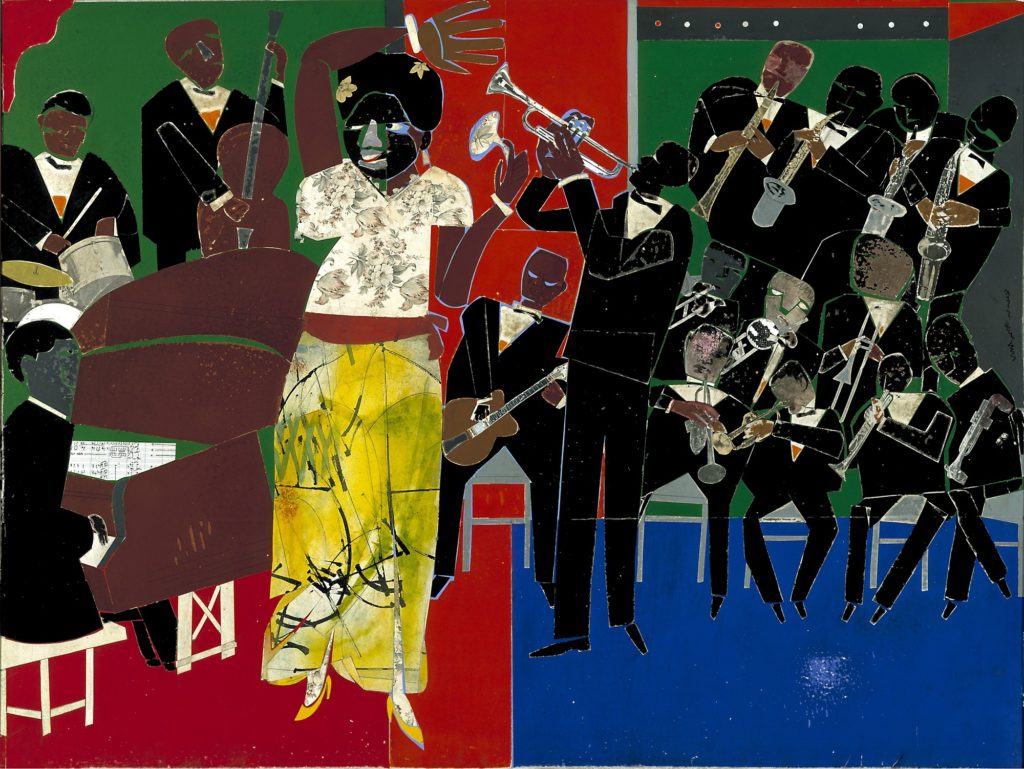By Kaitlin Britton Wheeler

The Role of Music in African/ African American Communities
Music has always been a staple in the Black community. Music has served to soothe us, express our struggles/adversities, and bring us together as one. It makes us dance, laugh, cry, shout, and praise. It is an essential part of any gathering. I can guarantee that you will hear Swag Surfin by Fast Life Youngstaz at almost every black function in 2021. It brings us all together physically as we grab each other shoulders to prepare for the left-ride swaying, but more than that, it brings us together on a much deeper level, as we know we can always find comfort and joy amongst each other in the presence of music.
Historically in our continent of origin, Africa, music was also an essential part of gatherings, festivals, ministries, rituals, etc. Combining our many different handmade instruments with various cheering, chanting, and shouting, the most beautiful noise is created and felt among everyone involved.
We took these same traditions with us across the ocean on the slave ships and carried them on with us to the plantations. This tradition of musicality in our culture manifested itself as negro spirituals, call and response work songs, praise & worship, etc. We used what we carried with us to America from the motherland to maintain our community morale and to give us somewhat of an escape from the horrors we faced and still face to this day. Songs like “Hoe Emma Hoe” kept us upbeat while we forcibly worked in the hot sun from sunrise to sundown. Negro Spiritual songs like “Swing Low Sweet Chariot” kept us close to our faith in times when we felt we could not go on (even though Christianity was not our original religion).
We maintain those same traditions to this day. Whether it be listening to praise dancing to Kirk Franklin’s “Melodies from Heaven” or yelling Meek Mill’s “Dreams and Nightmares” at every HBCU party, our emphasis on music remains. It is woven into the fabric of who we are and will continue to be that way until we no longer walk this earth.
The Way Music is Created, Performed, & Experienced
Our music can be made in several different ways. Historically we used instruments like the djembe or even our hands and legs to set the rhythm. Eventually, when we were on the plantations, we were not allowed to utilize many instruments as they would be considered too loud. We used our mouths to create beats in acapella, which soon came to be known as beatboxing. Soon, we began to use instruments like the piano, trumpet, saxophone, etc.
In regard to performance and according to our textbook, African and African American musical performances often combine “music and movement” together to create a feeling like no other. Our music is performed passionately and anyone who gets to experience it can attest to the lively and spirited atmosphere that is created. Take for example any James Brown performance, which instantly makes you want to shuffle your feet across the floor. Or take any Beyonce performance, which is especially known for its atmosphere of “turn up”. It’s just what we do and it is something that is not easily recreated.
The Timbre of African/ African American Music
For a person who isn’t a part of or doesn’t understand African/African American music, they would likely view it as chaotic, uproarious, and maybe even just all-around bad. The timbre of European music is usually considered much more calm and simple. The timbre (sound quality) of African/ African American music is much more lively and is a combination of various vocal and instrumental elements which come together, not for the purpose of being easy to listen to, but rather to be felt deeply within the individuals experiencing it.
According to our textbook, another thing that makes the timbre of our music very unique and distinct is how we manipulate our instruments. We use the instruments as an extension of or an imitation of the voice. It is almost as though the player is singing or talking through their instrument. This method of playing not only is very impressive, but it also evokes raw emotion in our musical performances. This concept can easily be seen in jazz performances, which usually do not have any actual singing parts. The instruments in jazz performances become voices and are felt in the same way one would feel listening to a vocalist belting at the top of their lungs.
Musical Structures in African/African American Music
Call & Response and Syncopations & Polyrhythms are two of the most common musical structures found in our music. Call and Response is a structure where one (or one side) says something and then the other side responds. This goes on and on back and forth and is usually an exhilarating experience to be a part of. Syncopations and Polyrhythmns are both strategic manipulations of beats. Both of these musical structures reflect our communal values and interactive nature because they both require participation and sync with multiple different people to come together as one. Call and Response almost always result in and depends on audience participation to work. This brings us together as one to create the desired sound. Polyrhythms are when multiple different beats and rhythms are layered on top of each other to create one cohesive sound. This is a reflection of our traditional communal values because just like how we say “it takes a village” and that when we come together we are stronger than ever, polyrhythms require the same exact mentality to succeed. One could honestly say that polyrhythms and call and response are the ultimate reflection of who we are as a people.


